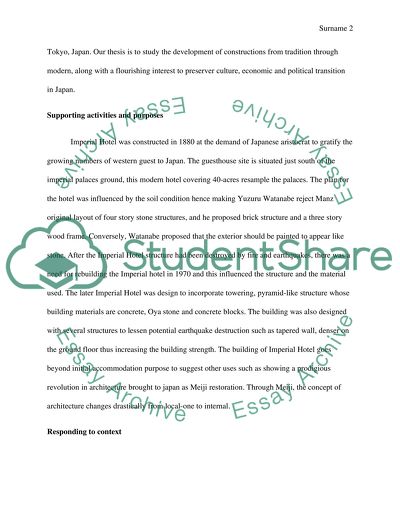Cite this document
(“Imperial Hotel in Tokyo, Japan Research Paper Example | Topics and Well Written Essays - 1250 words”, n.d.)
Imperial Hotel in Tokyo, Japan Research Paper Example | Topics and Well Written Essays - 1250 words. Retrieved from https://studentshare.org/architecture/1667041-imperial-hotel-in-tokyo-japan
Imperial Hotel in Tokyo, Japan Research Paper Example | Topics and Well Written Essays - 1250 words. Retrieved from https://studentshare.org/architecture/1667041-imperial-hotel-in-tokyo-japan
(Imperial Hotel in Tokyo, Japan Research Paper Example | Topics and Well Written Essays - 1250 Words)
Imperial Hotel in Tokyo, Japan Research Paper Example | Topics and Well Written Essays - 1250 Words. https://studentshare.org/architecture/1667041-imperial-hotel-in-tokyo-japan.
Imperial Hotel in Tokyo, Japan Research Paper Example | Topics and Well Written Essays - 1250 Words. https://studentshare.org/architecture/1667041-imperial-hotel-in-tokyo-japan.
“Imperial Hotel in Tokyo, Japan Research Paper Example | Topics and Well Written Essays - 1250 Words”, n.d. https://studentshare.org/architecture/1667041-imperial-hotel-in-tokyo-japan.


